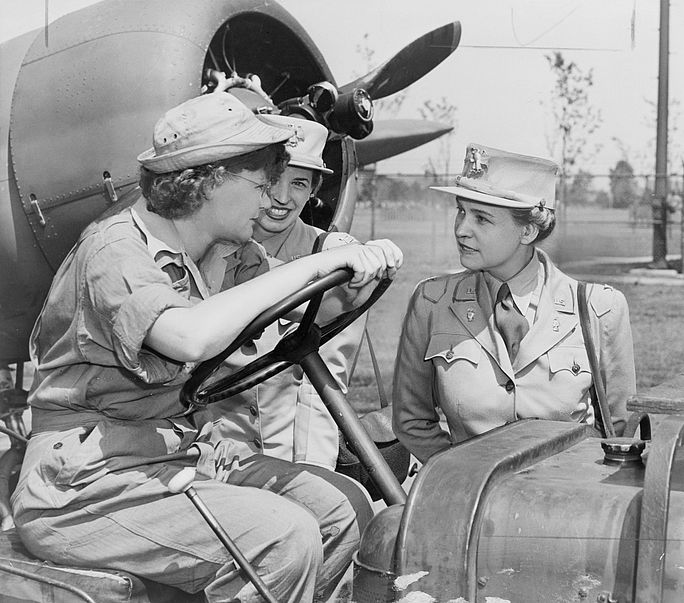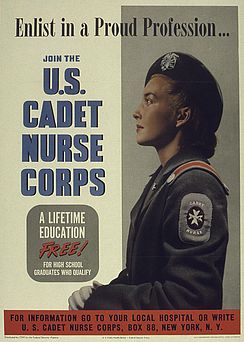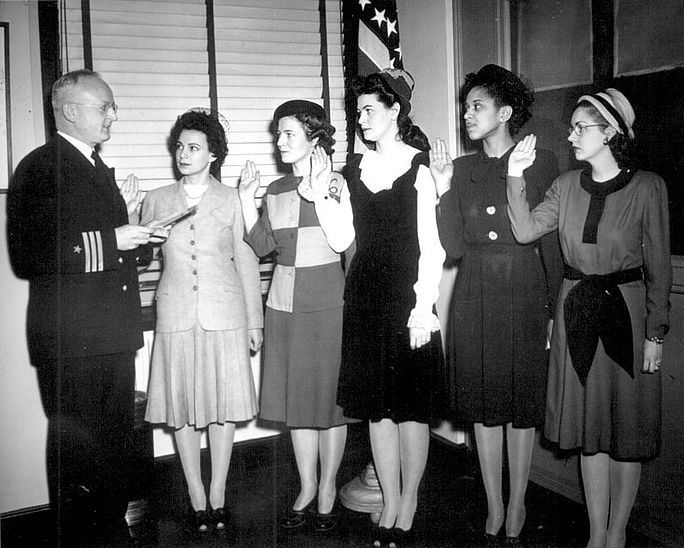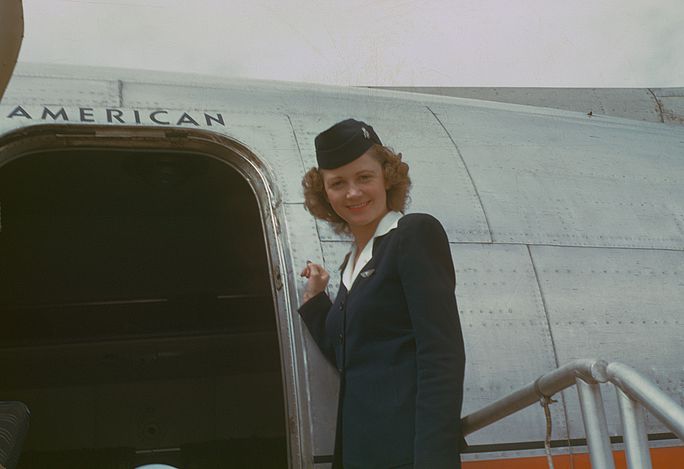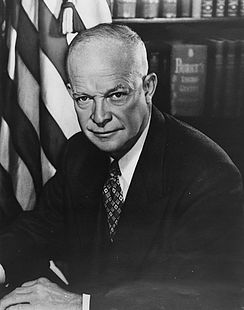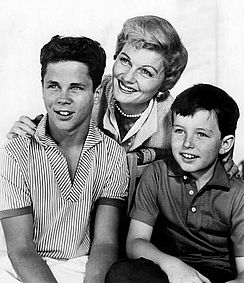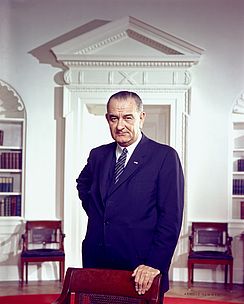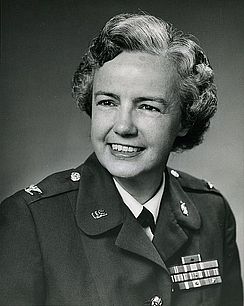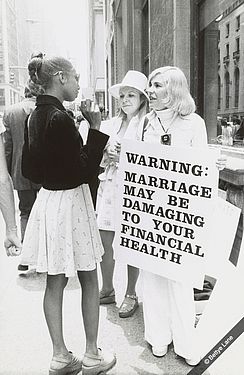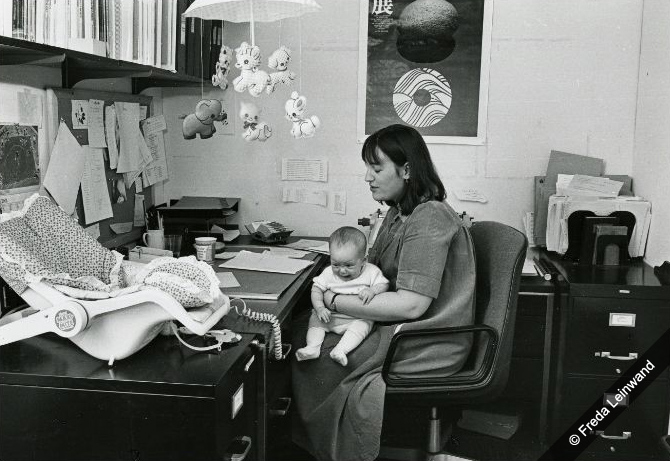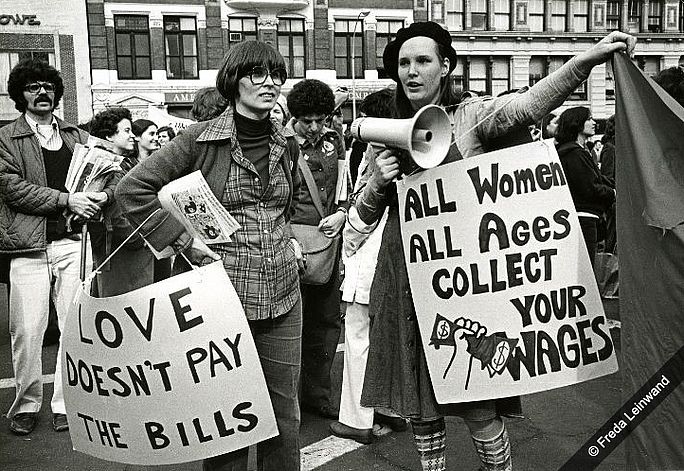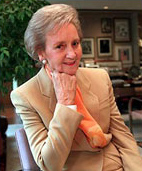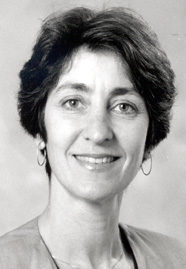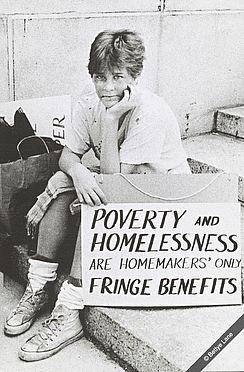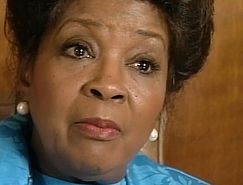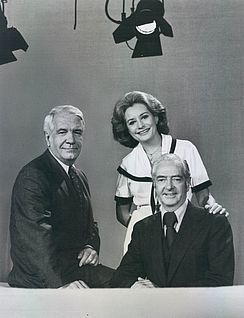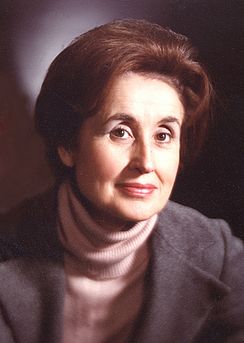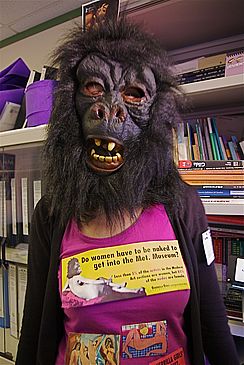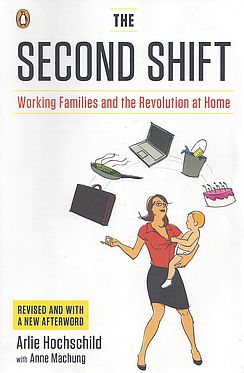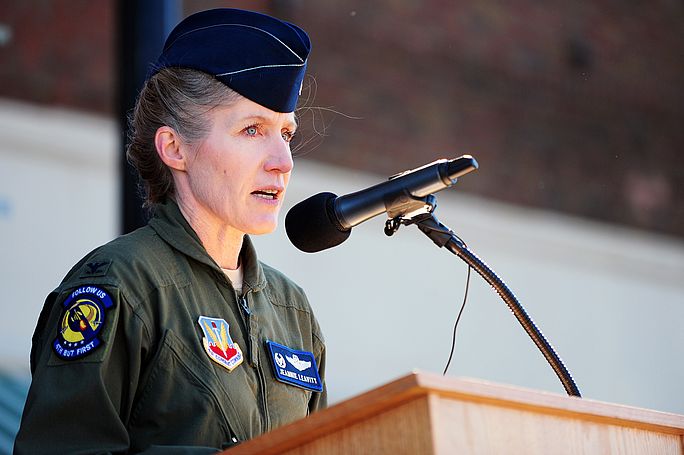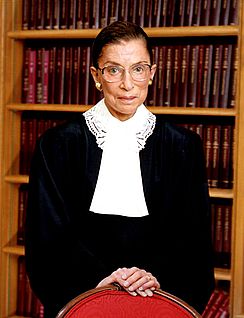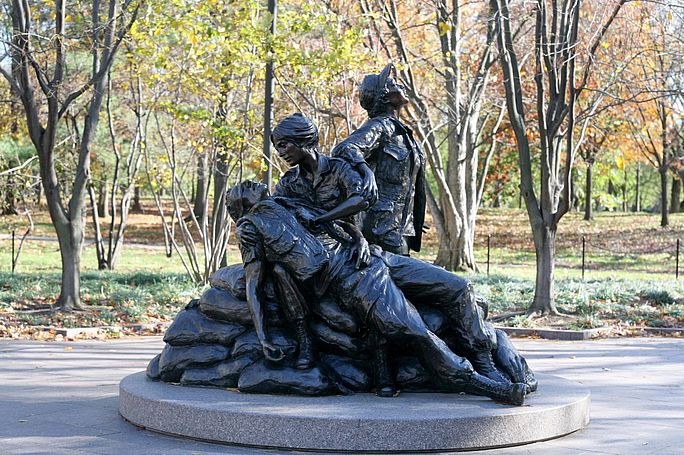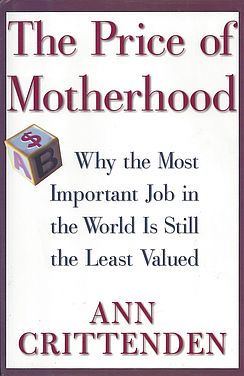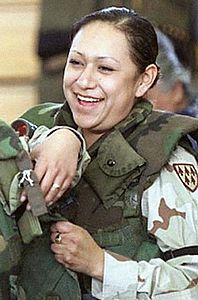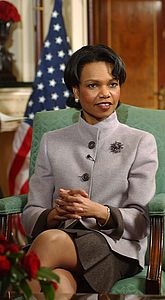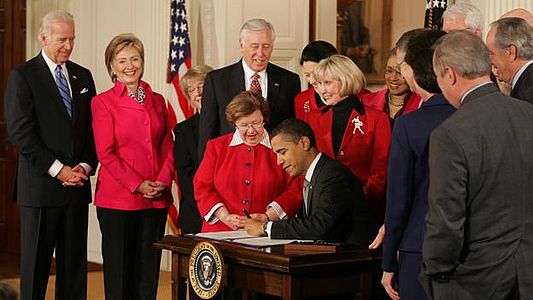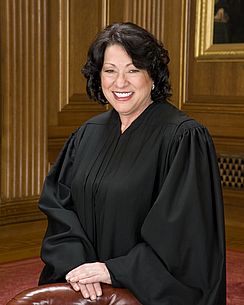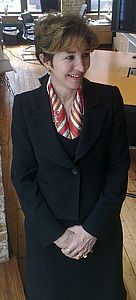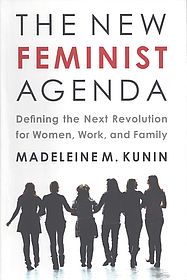Resource Library
Workplace & Family Timeline
1941 Lanham Community Facilities Act
Congress passed the Lanham Community Facilities Act to fund childcare facilities in areas where war industries were located. The resulting 2,800 childcare centers, with about 1.5 million children, were open to children of all mothers working in defense industries. The centers closed at the end of the war. “A Brief History of Federal Financing for Child Care in the United States” by Abby J. Cohen. “Child Care: The Federal Role During World War II” by Emilie Stoltzfus.
1942 Lt. Susan Ahn Cuddy
Korean-American Susan Ahn Cuddy was the first woman gunnery officer in the U.S. Navy, training male pilots to shoot machine guns. She served from 1942 to 1946, retiring at the rank of Lieutenant. She then worked for Navy Intelligence and the National Security Agency. Susan Ahn Cuddy website.
1942 Lt. Annie Fox
Army First Lieutenant Annie Fox (1893-1987) became the first woman to be awarded a Purple Heart for her “coolness and efficiency” during the Japanese attack on Pearl Harbor. Fox was Head Nurse at the Station Hospital at Hawaii’s Hickam Field. Award of the Purple Heart, 23 September 1942. Biography, Academy Women. Biography, Adventure Woman.
1942 Women’s Army Corps
The Women’s Army Corps (originally the Women’s Army Auxiliary Corps) was established in 1942. Representative Edith Nourse Rogers lobbied for an all-volunteer women’s Army corps. Oveta Culp Hobby, holding the rank of Colonel, was the first WAC director (on right in photo). About 150,000 women served as WACs at home and abroad. History of the Women’s Army Corps. “Women's Army Corps” by Col. Betty Morden. Photo: Library of Congress, public domain.
1943 The Nurse Training Bill
The Nurse Training Bill, also known as the Bolton Act because it was introduced by Representative Frances P. Bolton, subsidized and accelerated the training of military nurses during World War II. It barred racial discrimination in nurse recruitment and training, which allowed about 2,000 Black women to join the Cadet Nurse Corps. The Bolton Act, Case Western Reserve University. U.S. Cadet Nurse Corps, Rochester Medical Museum. Short History of Military Nursing, Ebling Library. Image: NARA, public domain.
1943 “Fly Girls”
Pilot Jacqueline Cochran lobbied the Army Air Forces to recruit women pilots when it became clear that there was a shortage of male pilots. The result was the creation of the WASPS, the Women Airforce Service Pilots. The over 1,000 women who became “Fly Girls” flew in everything except combat missions. They were never part of the regular Army Air Forces and received no veteran benefits. In 1977, Congress bestowed military active duty status on WASP veterans. The Women’s Auxiliary Ferrying Squadron. Film, “Fly Girls.”“Commending Women Airforce Pilots,” U.S. Congressional Record.
1944 WAVES
In 1942 Congress established the WAVES, Women Accepted for Volunteer Emergency Service. Two years later, Lt. Harriet Ida Pickens and Ens. Frances E. Willis were the first black women officers in the WAVES program. Seventy-two black women officers served during the war. First African American Female Officers. The Navy’s History of Making WAVES.
1945 U.S. Navy Nurses Corps
In January 1945 the U.S. Navy opened its ranks to African American women and Phyllis Mae Dailey became the first African American woman in the U.S. Navy Nurse Corps. “Phyllis Mae Dailey: First Black Navy Nurse” by Meg Roussel. Photo: U.S. Navy, public domain.
1945 Marguerite Higgins
The New York Herald Tribune reporter Marguerite Higgins was among the first group of Americans at the concentration camp Dachau when it was liberated. She went on to become the Tokyo bureau chief for the Tribune and cover the Korean War, for which she won a Pulitzer Prize. Marguerite Higgins papers, Syracuse University. Film, “No Job for a Woman.”
1945 Air Line Stewardesses Association
The Air Line Stewardesses Association (ALSA) was formed by five United Airlines flight attendants to protest unfair wages, hours, and working conditions. Three-quarters of United’s 300 attendants joined the union and in 1946 they signed a collective bargaining agreement. In their next contract, the attendants received a salary raise (the first since 1930), and gained other benefits. The ALSA became part of the Air Line Steward and Stewardesses Association. “Air Line Stewardesses Formed,” People’s World. History of Stewardess profession, United Airlines Historical Foundation. ALPA Steward and Stewardess Division Records, Reuther Library. Photo by Chalmers Butterfield, Creative Commons license.
1948 Helen Cam at Harvard
Harvard University tenured its first woman professor, British historian Helen Maud Cam, in 1948, ending “a 312 year masculine reign.” Cam taught at Harvard until her retirement in 1954. “375 Years of Women at Harvard,” Schlesinger Library. “The History of Women at Harvard” by Helen Lefkowitz Horowitz. Helen Maud Cam papers, Schlesinger Library. Helen Maud Cam papers, University of Cambridge.
1948 Armed Services Integration Act
The Women’s Armed Services Integration Act authorized regular and reserve status for women in all branches of the Armed Forces. Women were excluded from combat missions and women with children were ineligible for service. The Women’s Armed Services Integration Act, U.S. Marine Corps archive.
1950 Women in Radio and Television
The Association of Women Broadcasters, an auxiliary to the National Association of Radio and Television Broadcasters, was discontinued in 1950 because of its feminist politics. The group then became the independent American Women in Radio and Television, which worked to advance women’s careers in broadcasting. In the 1980s, AWRT expanded its work to produce public service announcements about issues of concern to women, including equal employment opportunities and sexual harassment. Today the group is called the Alliance for Women in Media. American Women in Radio and Television archives. Alliance for Women in Media.
1951 Donovan’s disposable diapers
Inventor Marion Donovan called them “boaters” when she invented the first diaper cover out of parachute nylon in 1949, which she first sold at Saks Fifth Avenue. In 1951, Donovan received four patents and then sold them to Keko Corporation for $1 million. Marion O’Brien Donovan papers. Obituary, New York Times. Biography, America Comes Alive.
1953 Government Contracts
President Eisenhower established the President’s Committee on Government Contracts to advance equal employment opportunities, work that had begun during the Franklin Roosevelt Administration. Each contracting agency of the federal government was responsible for upholding the nondiscrimination provisions of contracts they entered into with private businesses. Records of the Government Contract Committee. Photo: NARA, public domain.
1953 Women in Construction
The National Association for Women in Construction was founded by sixteen women in the Fort Worth, Texas, construction industry. The group continues to promote women’s professional development and leadership in the industry. NAWIC. History of NAWIC.
1957 “Leave it to Beaver”
On October 4, 1957, the family sitcom “Leave it to Beaver” debuted on television. The show ran for six seasons, introducing audiences to the white suburban lifestyle of the Cleaver Family. “10 episodes that show off Leave It To Beaver’s quiet innovation” by Todd VanDerWerff. Barbara Billingsley obituary. Photo: ABC Television, public domain.
1957 Womanpower
Womanpower was a study published by Columbia University’s National Manpower Council. The study stated that women’s labor was “essential” and “distinctive” and it called on the federal government to review laws about the employment of women, especially in areas of national defense. No federal bureau followed up on the recommendation. Report on Womanpower Conference (PDF). Women in the 1950s, Dwight D. Eisenhower Presidential Library.
1958 National Defense Education Act
The National Defense Education Act increased opportunities for women to attend college. Passed after the Soviet Union launched Sputnik, the Act provided student aid and funded the teaching of science, math and foreign languages to strengthen America’s national security and leadership in the world. “Sputnik Spurs Passage of the National Defense Education Act,” U.S. Senate. History and funding details, AECT. The Federal Role in Education, U.S. Department of Education.
1960 Women’s paychecks
In 1960 women earned 61 cents, on average, for every dollar earned by men. The Wage Gap Over Time, National Committee on Pay Equity.
1960 New Orleans schools
Parents braved segregationist protests to send their children to New Orleans’ newly integrated schools. The image of Ruby Bridges entering the William Frantz Elementary School was made famous by Norman Rockwell’s painting “The Problem We All Live With.” “Fifty years later, students recall integrating New Orleans public schools” by Katy Reckdahl. “The Problem We All Live With,” Norman Rockwell Museum.
1961 Mary Bunting & women’s education
Mary Bunting, microbiologist and president of Radcliffe College, was quoted in Life and Time magazines: “Adults ask little boys what they want to do when they grow up. They ask little girls where they got that pretty dress. We don’t care what women do with their education.” Bunting cared. Mary Ingraham Bunting, Radcliffe College. Obituary, New York Times. “Our Greatest Waste of Talent Is Women,” Life magazine.
1962 Catalyst
Catalyst was established by Felice N. Schwartz with the mission of bringing “to our country’s needs the unused capacities of educated women who want to combine family and work.” The initial focus on part-time women workers shifted first to women in corporations and later to women and men in the business world. Catalyst.
1963 Women’s paychecks
In 1963, the year the Equal Pay Act was passed, women earned 59 cents to every dollar earned by men. This was a drop from 61 cents in 1960. The Wage Gap Over Time, National Committee on Pay Equity. Text of the Equal Pay Act.
1963 ANC Mothers Anonymous
ANC (Aid to Needy Children) Mothers Anonymous, a pioneering welfare rights organization, was established by Johnnie Tillmon. The group became part of the National Welfare Rights Organization (NWRO) and Tillmon served as its Executive Director from 1972 to 1975. Johnnie Tillmon audio interview. Johnnie Tillmon obituary.
1963 Mary Kay
After Mary Kay Ash was denied a promotion, she left her job at Stanley Home Products and founded Mary Kay Cosmetics. Women distributors, called “beauty consultants,” helped make the company hugely successful from the start. Mary Kay.
1964 Wider Opportunities for Women
Wider Opportunities for Women, or WOW, was founded to help women enter the workforce and gain economic security. The group’s focus has been on helping women in the nontraditional trades. WOW places gender equality at the center of its programs. Wider Opportunities for Women. Economic Security Database, WOW.
1964 Lorraine Hansberry
At a United Negro College Fund writers’ contest, dramatist Lorraine Hansberry said, “Though it be a thrilling and marvelous thing to be merely young and gifted in such times, it is doubly so – doubly dynamic – to be young, gifted, and black.” Hansberry’s play To Be Young, Gifted and Black opened in 1969. Lorraine Hansberry Literary Trust. Biography, University of Minnesota.
1964 Academic Women
Sociologist Jessie Bernard’s 1996 New York Times obituary said her “wide-ranging research and writings on women’s issues provided scholarly foundation for the modern feminist revolution.” Her study Academic Women examined the productivity and creativity of women teachers. Biography, AAUW. Biography, JWA. Obituary,New York Times.
1965 Oklahomans for Indian Opportunity
LaDonna Harris (Comanche) and others founded Oklahomans for Indian Opportunity (OIO) in 1965 to increase Native self-sufficiency through a variety of educational and occupational programs. In 1970 the OIO became Americans for Indian Opportunity, which seeks to improve the economic conditions of Indian communities. LaDonna Harris biography, Americans for Indian Opportunity. Video, “Great Tribal Leaders of Modern Times: LaDonna Harris,” Native Nations Institute.
1965 Executive Order 11246
President Lyndon Johnson’s Executive Order 11246 prohibited discrimination based on race, color, religion or national origin by government contractors. In 1967, the act was amended to include sex discrimination. Enforcement is overseen by the Office of Federal Contract Compliance Programs. Executive Order 11246, U.S. Department of Labor.Facts on Executive Order 11246, Office of Federal Contract Compliance Programs.
1965 Erma Bombeck
With humor, Erma Bombeck chronicled her life as a suburban housewife in her nationally syndicated column “At Wit’s End.” “Let us be practical,” she wrote in one column. “If God had meant for us to clean under refrigerators, he would have given us yardstick hands.” Erma Bombeck Museum. Erma Bombeck Writers’ Workshop, University of Dayton.
1965 Higher Education Act
Created to encourage the pursuit of education by providing greater financial assistance to students, the Higher Education Act contributed to increased diversity on campuses. Along with the Elementary and Secondary Education Act of 1965, the act expanded federal involvement in education. Higher Education Act of 1965 (PDF). Higher Education Opportunity Act, 2008 (reauthorization of Higher Education Act of 1965).
1966 Weeks v. Southern Bell
With the support of NOW, Lorena Weeks brought suit against Southern Bell after being denied a higher-paying job the company said was for men only because it required heavy lifting. In 1969, the Court concluded that Southern Bell’s weight-lifting rule violated Title VII of the 1964 Civil Rights Act. Case documents. Lorena Weeks archive.
1966 La Vida
Written by Oscar Lewis, La Vida: A Puerto Rican Family in the Culture of Poverty is an anthropological study of family life in San Juan, Puerto Rico, and New York. The book won the National Book Award for Science, Philosophy and Religion in 1967 and raised public awareness about the “culture of poverty.” Summary of preliminary report by Oscar Lewis (PDF). National Book Awards, 1967.
1967 Women in the War on Poverty
At the Conference on Women in the War on Poverty, held under the auspices of the Office of Economic Opportunity and attended by 460 leaders of women’s groups, President Johnson stated that long before he had declared the War on Poverty “women’s groups were fighting poverty in the neighborhoods and in the legislative halls. Many of the early victories in the struggle against poverty were won because the women cared enough to work, to plan, and to make their influence felt.” Speech by President Johnson. “Lyndon B. Johnson and the War on Poverty” by Guian A. McKee (PDF). Photo: White House Press Office, public domain.
1967 Betty Furness
After a successful film career, Betty Furness was appointed by President Johnson as a Special Assistant for Consumer Affairs, a consumers’ rights advocacy position. She also led the New York City Consumer Affairs Department and served on the New York State Consumer Protection Board. Furness Talks Consumer Protection. Obituary, New York Times.
1967 Muriel Siebert
Muriel Siebert faced extreme gender discrimination in her effort to become the first woman to own a seat on the New York Stock Exchange. Her success led to her appointment as New York’s Superintendent of Banks. She was known as the “First Woman of Finance.” Muriel Siebert & Co., Inc.Obituary, Bloomberg Business. Obituary, New York Times.
1967 Public Law 90-130
In 1967, Public Law 90-130 removed restrictions on the careers of women military officers and opened the ranks of General and Admiral to women military officers. In 1970, Colonels Elizabeth Hoisington and Anna Mae Hays were promoted to Brigadier General. Text of Public Law 90-130 (PDF). First Female General Officers, Center of Military History. Brigadier General Anna Mae Hays biography. Brigadier General Elizabeth Hoisington obituary, Washington Post. Photo: General Hoisington, U.S. Army Signal Corps, public domain.
1968 Federally Employed Women
FEW, Federally Employed Women, was established to fight sex discrimination in the federal government. In 1975, FEW successfully challenged the FBI’s minimum height requirement in an effort to open the bureau’s ranks to more women. Federally Employed Women.
1968 Sex-segregated job ads
In 1968, the EEOC stated that help wanted advertisements placed in “male wanted” and “female wanted” columns violated Title VII of the 1964 Civil Rights Act. In 1973, the Supreme Court ruled in Pittsburgh Press Co. v. Pittsburgh Commission on Human Relations that a city ordinance prohibiting sex-specific advertisements did not violate the First Amendment. Prohibited Employment Policies/Practices, EEOC. Pittsburgh Press Co. v. Pittsburgh Commission on Human Relations, Cornell University. “Male Help” and “Female Help” employment ads: Teaching US History, North Carolina Digital History.
1968 EEOC & stewardesses
For three years, the EEOC had been addressing the working conditions of stewardesses (women flight attendants) before it ruled that airlines practiced age and gender discrimination by firing women in their early thirties or if they married. Discriminatory practices by the airlines led to a continuing string of lawsuits in the 1970s. Timeline of Flight Attendants' Fight Against Discrimination, from Femininity in Flight by Kathleen M. Barry. “Airline Ends Sex-bias Suit for $33 Million” by James Warren.
1969 Women in Air Force ROTC
The Air Force opened its program for the training of Reserve Officers to women in 1969. A pilot program ran from 1956 to 1960. Major General Jeanne M. Holm, the first one-star General in the Air Force, played an instrumental role in expanding women’s opportunities in the Air Force. “Women's legacy parallels Air Force history” by Martha Lockwood. Major General Jeanne Holm interview.
1969 Marriage License Bureau Protest
In September 1969 the radical women’s liberation group known as The Feminists picketed the New York City Marriage License Bureau to bring attention to their analysis that marriage made women “sex slaves.” Excerpt from leaflet Daring to Be Bad by Alice Echols.
1970 NOW Legal Defense & Education
NOW’s Legal Defense and Education Fund was founded to provide legal advocacy for women’s rights. One of its first cases was Bowe v. Colgate Palmolive Co., concerning the company’s weight-lifting rule. In 2004, the group changed its name to Legal Momentum. Legal Momentum. Bowe v. Colgate Palmolive Co.
1970 Ladies’ Home Journal Sit-in
Protesting what they saw as demeaning and irrelevant articles, about 100 women occupied the offices of the Ladies’ Home Journal in March 1970. They demanded that the magazine hire a woman editor. That August, the magazine ran a special section on Women’s Liberation. “The Ladies’Home Journal Sit-in” by Megan Gibson. “March 18, 1970” by David Dismore. Video, Makers, PBS. “The Ladies’ Invasion of Man’s Home Journal” by Minda Bikman. “A Daring New Concept” by Jean E. Hunter.
1970 No-Fault Divorce
California passed the first No-Fault Divorce law in 1970 and by 1985 every state had some type of no-fault divorce law. While initially hailed as a step forward for women, no-fault became controversial as it became clear that women’s domestic contributions were being ignored in the division of assets or decisions about alimony. In 1979, the Supreme Court ruled unconstitutional an Alabama law that husbands but not wives may be required to pay alimony. “Readings on No-Fault Divorce,” California Research Bureau (PDF). Lenore Weitzman biography. “How Women Fare in No-Fault Divorce” by Georgia Dullea. Photo © Bettye Lane.
1970 Schultz v. Wheaton Glass
This court case helped define the terms of the Equal Pay Act by stating that jobs, despite their titles, are “substantially equal” if their duties are comparable. This means that employers cannot use job titles to pay women less than men. Case documents. Equal Pay Act Frequently Asked Questions, AAUW.
1970 Gray Panthers
The Gray Panthers was founded by Maggie Kuhn and a group of retired women friends to give older Americans a voice in public policies affecting their lives. The same year the National Caucus and Center on Black Aging was established to focus on the issues of health care, affordable housing, and employment for older black Americans. History of Gray Panthers. Global Alliance for the Rights of Older People. Film, “Maggie Growls,” PBS.
1971 Household Technicians of America
The Household Technicians of America (HTA) was founded by Geraldine Miller. The group promoted the labor rights of all domestic workers, including the right to be paid at least the federal minimum wage. “All in a Day's Work” by Ron Chernow. Geraldine Miller biography, Sophia Smith Collection. Fact Sheet for Domestic Service Workers, U.S. Department of Labor.
1971 Child Development Bill
In 1971 Congress passed the Comprehensive Child Development Bill to establish a national daycare system available to all parents on a sliding-scale basis. President Nixon vetoed the bill the next year, stating that it would weaken the family. The Comprehensive Child Development Bill and Veto. “Why America Never Had Universal Child Care” by Nancy Cohen. “The State of the 4-Year-Olds” by Gail Collins. Photo © Freda Leinwand.
1971 Phillips v. Martin Marietta
Phillips v. Martin Marietta was the first Title VII case to reach the Supreme Court. In a 9-0 decision, the court ruled that the company’s refusal to hire women with pre-school age children was unconstitutional. Case documents.
1971 ACLU & Women’s Rights
The American Civil Liberties Union Women’s Rights Project was founded by Ruth Bader Ginsburg to lead cases in the areas of equality for women and women’s economic rights through the nation’s court system. ACLU and Women’s Rights. History of ACLU Women’s Rights Project. Ruth Bader Ginsburg biography, ACLU. Ruth Bader Ginsburg biography, Columbia Law School.
1972 Wages for Housework
The publication of “The Power of Women and the Subversion of the Community” by Selma James and Mariarosa Dalla Costa initiated a discussion about women’s unpaid work in the home. James then founded the International Wages for Housework Campaign. The first American Wages for Housework groups were founded in 1973. In 1975, Silvia Federici’s “Wages Against Housework” was published. “The Power of Women and the Subversion of the Community.”Video interview, “Housework as Work: Selma James on Unwaged Labor.”“Wages Against Housework.”Flyer, The Campaign for Wages for Housework (PDF). Photo © Freda Leinwand.
1972 Katharine Graham
Katharine Graham became the first woman CEO of a Fortune 500 company when she took over the Washington Post Company, publisher of The Washington Post. Biography, The Washington Post. Biography and interview, NPR. Biography, Graham Holdings. Obituary, The Washington Post. Video interview about her book Personal History. Photo: Library of Congress, public domain.
1972 “Welfare is a Women’s Issue”
Welfare rights activist Johnnie Tillmon’s article “Welfare is a Woman’s Issue” was published in Ms. Magazine. The article began: “I’m a woman. I’m a black woman. I’m a poor woman. I’m a fat woman. I’m a middle-aged woman. And I’m on welfare.” “Women on Welfare” by Johnnie Tillmon (PDF). “Welfare is a Women’s Issue,” Ms. Magazine.
1972 Chicana Service Action Center
Francisca Flores became the first director of the Chicana Service Action Center, founded by members of the Comisión Feminil Mexicana Nacional. The group initially provided job training to low-income women in the Los Angeles area but expanded its scope to provide other services, including helping battered women. Comisión Feminil Mexicana Nacional archives.
1972 Operation Life
Operation Life was a community service agency founded by Ruby Duncan, who along with other welfare mothers had stormed Caesar’s Palace to protest cuts in welfare benefits. Operation Life lobbied for expanded anti-poverty programs and ran a health center and library to empower women and their families. “Book Review: Storming Caesar’s Palace” by Annelise Orleck. Ruby Duncan biography.
1972 Army & Navy ROTC
In 1972, the Army and Navy began enrolling women in their ROTC (Reserve Officers Training Corps) programs, following the lead of the Air Force, which accepted women in 1969. This change allowed more women to achieve commissioned officer status in the military. History of Army ROTC. History of Navy ROTC.
1973 Children’s Defense Fund
The Children’s Defense Fund was founded by Marian Wright Edelman who hoped to shift the focus of the Civil Rights movement onto issues of poverty. She sought to influence public policies on children and families through research and lobbying. Children’s Defense Fund. Marian Wright Edelman biography. Video interview, PBS.
1973 Frontiero v. Richardson
The Supreme Court case of Frontiero v. Richardson determined that regulations involving military dependents cannot discriminate on the basis of sex. Air Force Lt. Sharron Frontiero claimed housing and medical benefits for her husband; she sued the government because his spousal benefits were not the same as those for wives of servicemen. The Court ruled that the military’s policy was unconstitutional. Ruth Bader Ginsburg argued on her behalf. Case documents, Oyez. Case documents, Cornell. “Frontiero v. Richardson” by Alex McBride.
1973 9to5
9to5, the National Association of Working Women, grew from a Boston-based grassroots collective of women office workers to a national organization focused on work and family issues. The group’s founder, Karen Nussbaum, served as director of the Women’s Bureau in the U.S. Department of Labor in the 1990s and co-founded Working America, an affiliate of the AFL-CIO. 9to5. Working America. Karen Nussbaum biography. “Women's Wage Gap,” video interview with Karen Nussbaum. Photo: U.S. Department of Labor, public domain.
1974 Alliance for Displaced Homemakers
The Alliance for Displaced Homemakers (known as the National Displaced Homemakers Network and, later, Women Work! The National Network for Women’s Employment) was founded by Tish Sommers and Laurie Shields to advocate for reforms in divorce laws so that women’s contributions to a family’s domestic life were taken into consideration during the division of assets. In 1976, the Alliance opened a center for displaced homemakers in Oakland, California and in 1978 a national conference on displaced homemakers was held in Baltimore, Maryland. Tish Sommers papers. Hearing, Equal Opportunity for Displaced Homemakers Act (PDF). Laurie Shields obituary. Tish Sommers obituary. Photo © Bettye Lane.
1974 “Black Women in Business”
Black Enterprise magazine ran an entire issue highlighting “Black Women in Business and Public Life” in August 1974. Ernesta G. Procope, the head of E. G. Bowman Insurance, was on the cover. Black Enterprise, August 1974. “Black History Business Titan: Ernesta Procope” by Raqiyah Mays. Video, “Portrait of a Living Legend: Ernesta Procope.”
1974 Mandatory maternity leave
The Supreme Court ruled in Cleveland Board of Education v. LaFleur that mandatory maternity leaves for pregnant women are illegal. The ruling was a victory for all workers because it reinforced the belief that all people have a right to both a work life and a family life. Cleveland Board of Education v. LaFleur.
1974 Corning Glass Works v. Brennan
Corning Glass Works v. Brennan was the first Supreme Court decision to interpret the Equal Pay Act of 1973. By ruling that Corning Glass violated the Equal Pay Act, the Supreme Court strengthened the idea of equal pay for equal work. Case documents. ACLU summary.
1974 Women’s Educational Equity Act
The Women’s Educational Equity Act (WEEA), a federal program to promote gender equity in education, was drafted by legislative assistant Arlene Horowitz and introduced to the U.S. House of Representatives by Rep. Patsy Mink. The act was funded until 2003. Women’s Educational Equity Act. Patsy Mink papers, Library of Congress.
1975 Women’s Lives/Women’s Work
The Women’s Lives/Women’s Work project of the Feminist Press, funded by the Ford Foundation and the Carnegie Corporation, resulted in the publication of foundational texts in women’s studies including Alice Kessler-Harris’s Women Have Always Worked and Dorothy Sterling’s Black Foremothers. History of the Feminist Press. Women Have Always Worked. Black Foremothers.
1975 “Sexual Harassment”
Sexual harassment was a term used in women’s groups in the early 1970s. In 1975, Lin Farley used the term at a hearing of the New York City Human Rights Commission headed by Eleanor Holmes Norton. The issue of sexual harassment in the workplace reached national attention in 1991, when Anita Hill accused Supreme Court nominee Clarence Thomas of sexual harassment. Women Speak Out. Brownmiller on Hearing.
1976 Women’s paychecks
In 1976 women earned 60 cents, on average, for every dollar earned by men. This ratio remained essentially unchanged since 1960. National Committee on Pay Equity.
1976 Barbara Walters
ABC paid Barbara Walters a salary of $1 million when she was hired to be the first woman co-anchor of a television network’s evening news program. Low ratings and opposition from her co-anchor led the network to release her from her contract two years later, but the “glass ceiling” had been broken. In 2006, Katie Couric became the first woman solo anchor of an evening news program. “View From the Top” by Curtis Sittenfeld. “I Have to Ask: How Barbara Walters got where she is” by Nicholas Lemann. Photo: ABC News, public domain.
1976 Annapolis & West Point
Congress authorized the admission of women to all federal service academies in 1976. The Naval Academy at Annapolis admitted 81 women midshipmen and the Military Academy at West Point’s first class had 119 women cadets. “The First Women of West Point” by Kelly Schloesser. “First Female Midshipmen Graduate from U.S. Naval Academy,” U.S. Naval Institute.
1976 Clothing & Textile Workers Union
The Amalgamated Clothing Workers of America and the Textile Workers Union of America merged in 1976 to form the Amalgamated Clothing and Textile Workers Union. The union’s first major action was a consumer boycott of J.P. Stevens products. The ACTWU later merged with the International Ladies’ Garment Workers Union, the Union of Needletrades, Industrial, and Textile Employees, and the Hotel Employees and Restaurant Employees Union to become UNITE HERE. History of UNITE HERE. Amalgamated Clothing and Textile Workers Union archive. History of the ILGWU. J.P. Stevens Boycott, Global Nonviolent Action Database. Los Angeles J.P. Stevens Boycott Committee archive.
1977 Shirley Muldowney
In 1977, Shirley “Cha Cha” Muldowney became the first woman to win a major National Hot Rod Association race; she went on to win more top races. The same year, Janet Guthrie became the first woman to race in the Indianapolis 500. Shirley Muldowney website. Interview in Hot Rod.
1977 Juanita M. Kreps
Economist Juanita M. Kreps, who became the first woman director of the New York Stock Exchange in 1972, broke another “glass ceiling” when she became the first woman Secretary of Commerce, serving from 1977 to 1979. Biography, National Women's History Museum. Obituary, Washington Post. Obituary, New York Times. Photo: U.S. Department of Commerce, public domain.
1978 Women on Navy ships
When Judge John Sirica ruled that a law banning women from Navy ships was unconstitutional, Congress amended the law to allow women on non-combat Navy ships. “Navy celebrates 25 years of women at sea” by Sheree Callahan. Owens v. Brown. Marjorie M. Smith biography.
1978 Homemakers Bill of Rights
Under the slogan, “Every Mother is a Working Mother,” NOW lobbied for a Homemakers Bill of Rights to demonstrate that women’s unpaid work as mothers and caregivers in the home was crucial to the U.S. economy. NOW asked people to stop using the phrase “non-working mother.” Homemakers Bill of Rights.
1978 Pregnancy Discrimination Act
After the 1974 Supreme Court case of Geduldig v. Aiello, which ruled that denying disability benefits for work loss resulting from normal pregnancy does not violate the Fourteenth Amendment, Congress readdressed the issue and passed the Pregnancy Discrimination Act. It amended Title VII of the Civil Rights Act of 1964 to cover sex discrimination based on “pregnancy, childbirth, or related medical conditions.” Geduldig v. Aiello. The Pregnancy Discrimination Act of 1978. Pregnancy Discrimination summary, EEOC.
1978 Berkman v. City of New York
After Brenda Berkman and all the other women applying to the New York City Fire Department failed the physical test, Berkman sued for sex discrimination; she won and became a firefighter in 1982. She founded United Women Firefighters. Biography, Sisters in the Brotherhoods. Biography, Sophia Smith Collection. Berkman v. City of New York. Film, “Taking the Heat.”
1978 University of California v. Bakke
The Supreme Court case Regents of the University of California v. Bakke stated that affirmative policies at educational institutions were constitutional, but not racial quotas. The issue of affirmative action, whether based on race or sex, continues to be an issue in educational institutions. Case documents. Summary, PBS.
1979 “Glass Ceiling”
At a conference in 1979 Katherine Lawrence and Marianne Schreiber, both employed by Hewlett Packard, stated that women hit a “glass ceiling” on their way to promotion. The term was popularized by Gay Bryant in The Working Woman Report (1984) and Carol Hymowitz and Timothy Schellhardt in a 1986 Wall Street Journal article, “The Glass Ceiling: Why Women Can’t Seem to Break the Invisible Barrier that Blocks Them From the Top Jobs.” “Glass Ceiling,” Money-zine. “Glass Ceiling,” Encyclopedia of Race, Ethnicity and Society (PDF).
1979 Boss Lady
Boss Lady: An Executive Woman Talks About Making It by the advertising executive Jo Foxworth is one of a new genre of books to promote and celebrate women in the corporate world. Book review, Kirkus. Biography, Advertising Hall of Fame. Biography, YWCA. Obituary.
1979 Sexual Harassment
Feminist lawyer Catharine MacKinnon’s groundbreaking book Sexual Harassment of Working Women: A Case of Sex Discrimination continues to be read by lawyers and is one of the most-cited American legal texts in the field. Sexual Harassment of Working Women. Biography, University of Michigan. Interview, PBS.
1980 Alicia Cuaron
The first woman to head the Colorado Economic Development Association was Alicia Cuaron, a champion for bilingual education and Latina educational and occupational opportunities. Cuaron was a founder of the Institute of Hispanic Professional Development. Biography, Encore. Biography, Colorado Women’s Hall of Fame.
1980 “Head of Household”
In 1980 the Bureau of the Census discontinued use of the terms “head of household” and “head of family” and now uses “householder” and “family householder.” Before 1980, the Census Bureau automatically classified the husband as the head of household. U.S. Census Bureau definition.
1981 Rostker v. Goldberg
In 1980, President Carter called for a renewed military draft. The next year, in Rostker v. Goldberg, the U.S. Supreme Court ruled that the Military Selective Service System’s practice of having only men register for the draft was constitutional. One of the key issues was the necessity to prepare men but not women for combat readiness. Case documents. “Women and the Draft in America,” MilitarySpot.com. “Fighting Women” by Jill Elaine Hasday (PDF).
1981 Women in college
In 1981, women surpassed men in earning undergraduate degrees. By 2012 women constituted 57% of all U.S. college students. “The Male-Female Ratio in College” by Daniel Borzelleca. “Why Do Women Outnumber Men in College?” by David Francis.
1982 Women’s paychecks
In 1982 women earned 62 cents, on average, for every dollar earned by men. This was the highest percentage since 1960. National Committee on Pay Equity.
1982 Casa Victoria
Casa Victoria was opened in 1982 by the Comisión Femenil Mexicana Nacional (CFMN) as a residential treatment center for adolescent girls. Comisión Feminil Mexicana Nacional archives. Comisión Feminil San Fernando Valley Collection.
1982 Women’s Economic Agenda
The Women’s Economic Agenda Project was founded in Oakland, California, to fight for economic justice for low-income women and their families. In 1996 the group started a computer and communications technology program to help women and minority owned businesses. WEAP. “Economic Democracy” by Ethel Long-Scott, WEAP Executive Director.
1982 With Silk Wings
With Silk Wings is a documentary film by Loni Ding, and a book by Elaine H. Kim and Janice Otani, about Asian American women whose careers are considered non-traditional in the Asian American community. The film and book were created by Asian Women United with funding from the Women’s Educational Equity Act. Film, With Silk Wings. Book, With Silk Wings. Review by Keiko Yamanaka.
1983 Uniform Marital Property Act
The Uniform Marital Property Act was a model law created to assist state legislatures in defining a class of property as “marital property” as opposed to individual property. This act recognized marriage as a partnership in which both spouses make different but equally important contributions and share ownership. Text of Uniform Marital Property Act (PDF). Marital Property Act summary.
1983 Sally Ride
On June 18, 1983, Sally Ride became the first woman in space. She was part of the Challenger space shuttle and her epic-making journey continues to inspire women and girls. Ride founded Sally Ride Science to encourage students to study STEM (Science, Technology, Engineering and Math) subjects. Sally Ride website. Biography, NASA. “My friend Sally Ride's final mission” by Susan Okie. Photo: NASA, public domain.
1984 Retirement Equity Act
The Retirement Equity Act was passed to make sure working women will receive their fair share of private pension plans. One of its most important provisions prevented employers from counting maternity leave as a break in service for participation in their retirement plan. “The Retirement Equity Act of 1984: A Review,” Social Security Administration (PDF). “The Retirement Equity Act and Beyond” by Phyllis Borzi.
1985 Guerrilla Girls
After a protest at the Museum of Modern Art to raise awareness that only 13 of the 169 artists on exhibition were women, a group of women artists formed the Guerrilla Girls. The result was a national and international discussion about women, art, and politics. Webpage. “The Guerrilla Girls: 30 years of punking art world sexism” by Emma Brockes. Photo by gaelx, Creative Commons license.
1986 Women’s paychecks
In 1986 women earned 64 cents, on average, for every dollar earned by men. This was four cents more than in 1960. National Committee on Pay Equity.
1986 Meritor Savings Bank v. Vinson
In Meritor Savings Bank v. Vinson the Supreme Court ruled that sexual harassment which created a hostile work environment was a form of sex discrimination and therefore a violation of Title VII of the Civil Rights Act of 1964. Feminist scholar and lawyer, Catharine Mackinnon, was co-counsel for the respondent. Case documents. Catherine MacKinnon biography, Harvard Law School.
1988 American Family Celebration
The American Family Celebration was a Washington D.C. action organized by the Coalition of Labor Union Women (CLUW) and women’s rights and civil rights activists to demand a national family policy, including family and medical leave, affordable and available day care and elder care, and a comprehensive health care system. Statement of Purpose (download). “Celebrating FMLA,” CLUW.
1989 Barbara Harris
In 1988 the Episcopal Church allowed women to be ordained as bishops. When Barbara Harris became the first woman Bishop Suffragan of the Episcopal Diocese of Massachusetts, she said “I certainly don’t want to be one of the boys. I want to offer my peculiar gifts as a black woman.” Biography, Episcopal Church. Interview, Episcopal News Service. Barbara C. Harris Center.
1989 The Second Shift
The Second Shift: Working Parents and the Revolution at Home by sociologist Arlie Russell Hochschild described how working women continued to do most of the household tasks and child care. Hochschild argued that women’s “second shift” working at home was a result of a “stalled revolution.” Review in The New York Times. Arlie Hochschild profile. Interview, Washington Post. Biography, ASA.
1989 Military Child Care Act
The Military Child Care Act was passed by Congress in 1989 to expand and enhance child development services on military installations. The bill was sponsored by Representative Beverly Byron of Maryland. In 1988, the military child care system served about 52,000 children; by 1997, the number was over 200,000. A 2011 report described the need for 37,000 more childcare slots. Military Child Care Act of 1989. “Military Child Care: The best is yet to come” by Linda Kozaryn.
1989 The Mommy Track
Felice Schwartz’s article “Management Women and the New Facts of Life” in Harvard Business Review argued that women interrupt their careers more often than men and this has costs to corporations. This article led to a debate about the “Mommy Track.” Article, “Management Women and the New Facts of Life.” “‘Mommy Career Track’ Sets Off a Furor” by Tamar Lewin. Felice Schwartz biography. “Debating the Problems of Women in the Corporation” by Susan Yohn.
1990 Women’s paychecks
In 1990 women earned 72 cents, on average, for every dollar earned by men. This was twelve cents more than in 1960. National Committee on Pay Equity.
1990 Adelante Mujer Latina
The Adelante Mujer Latina Conference was founded in Southern California by the Comisión Femenil Mexicana Nacional (CFMN) to support the educational and career aspirations of Latinas. The CFMN also sponsors other annual events to encourage Latinas’ workplace ambitions. Adelante Mujer Latina Conference. Comisión Femenil San Fernando Valley collection.
1990 Displaced Homemakers
The Displaced Homemakers Self-Sufficiency Assistance Act was passed by Congress to recognize more than 15 million displaced homemakers, the majority of whom lived in poverty because of the passage of no-fault divorce laws. The Act provided federal funds to states to create job-training programs and provide other assistance to displaced homemakers. The Displaced Homemakers Self-Sufficiency Act. “Homemakers Seek Job Training, Aid” by Carol Kleiman.
1990 Women’s Media Foundation
The International Women’s Media Foundation seeks to lessen the gender gap in all aspects of journalism. It was created in 1990 by a group of prominent U.S. women journalists with the belief that “news media worldwide are not truly free and representative without the equal voice of women.” IWMF. “International Women’s Media Foundation Widens Scope with $10M in Funding” by Sonia Paul.
1991 Women in combat
During the War in the Persian Gulf, Congress repealed laws banning women from flying combat missions and serving on combat ships. In 1993, Jeannie Leavitt became the first female fighter pilot in the U.S. Air Force. In 2013, the Defense Department ended the direct ground combat exclusion rule for female service members. “Defense Department Expands Women’s Combat Role” by Claudette Roulo. Colonel Leavitt interview, NPR. “Women’s Role in Combat: The War Resumes” by Jon Nordheimer. “The Cost of Women in Combat” by Leela Jacinto. Photo: Col. Jeannie Leavitt, U.S. Air Force, public domain.
1991 UAW v. Johnson Controls
Johnson Controls, a maker of batteries, barred women “capable of bearing children” from jobs that would expose them to lead because lead poisoning might potentially harm their fetus if they got pregnant. One woman chose to be sterilized rather than lose her job. The Supreme Court ruled that the company’s policy was unconstitutional. Case documents, Cornell. Case documents, Oyez.
1992 Schools Shortchange Girls
The report “How Schools Shortchange Girls” by the American Association of University Women and the Wellesley College Center for Research on Women stated that the “educational system is not meeting girls’ needs” and “gender equity is still not part of the national debate on educational reform.” The report opened up a national debate about how gender, race, and class influence success in the educational setting. “How Schools Shortchange Girls.”
1992 WANTO
Senator Nancy Kassebaum and Rep. Connie Morella co-sponsored the Women in Apprenticeship and Nontraditional Occupations Act (WANTO) to help women enter nontraditional occupations, defined as trades where women held less than 25% of the jobs. WANTO Fact Sheet (PDF). Summary of WANTO Act.
1993 Sisters in the Blood
Ardy Bowker’s Sisters in the Blood: The Education of Native America was a report funded and published under the auspices of the Women’s Educational Equity Act Publishing Center. The study questions the measurements for success of American Indian students and examines the dropout rates of Indian women. Sisters in the Blood (PDF).
1993 Take Our Daughters to Work
The first Take Our Daughters to Work Day was April 22, 1993. It was created by the Ms. Foundation under the leadership of Marie Wilson to introduce girls to the workplace of their parents. It is now called the Take Our Daughters and Sons to Work Day. History of Take Our Daughters to Work Day. Take Our Daughters and Sons to Work Foundation. Ms. Foundation for Women records.
1993 Ruth Bader Ginsburg
Ruth Bader Ginsburg co-founded the Women’s Rights Law Reporter in 1970 and the ACLU Women’s Rights Project in 1972 before being appointed by President Clinton to the U.S. Supreme Court in 1993. Biography, Columbia Law School. Biography, Cornell. Biography, JWA. Photo: Collection of U.S. Supreme Court, public domain.
1993 Nannygate
During her confirmation hearings for U.S. Attorney General, it was revealed that lawyer Zoe Baird employed undocumented workers as childcare workers and did not pay Social Security taxes on their wages. President Clinton’s second nominee, Judge Kimba Wood, was also revealed to have employed an undocumented worker as a nanny. No male nominees for high office had ever been asked about their childcare arrangements. The final nominee, Janet Reno, a woman with no children, was confirmed. “The Lesson of Zoe Baird,” The New York Times. “Zoe Baird's Real Unforgiveable Sin” by Clarence Page. “Nannygate II” by Pat Wingert.
1993 Vietnam Women’s Memorial
The Vietnam Women’s Memorial honors the over 265,000 women who served in Vietnam War. It was the first memorial in Washington, D.C. dedicated to women’s patriotic service. Vietnam Women’s Memorial Foundation. Photo by Cliff, Creative Commons license.
1993 Don’t Ask, Don’t Tell
Don’t Ask, Don’t Tell was the Clinton Administration’s policy about homosexuals and lesbians in the military. The policy directed military personnel to “don’t ask, don’t tell, don’t pursue, don’t harass.” This allowed closeted gay and lesbian military service members to continue serving but it did not lift the statutory ban on gays and lesbians in the military. The policy was repealed in 2011. “Don’t Ask, Don’t Tell,” U.S. Department of Defense. “The Awkward Clinton-Era Debate Over Don’t Ask, Don’t Tell” by Russell Berman. Bill Clinton interview, CBS.
1993 Harris v. Forklift Systems
In 1993, the Supreme Court heard the sex discrimination case of Harris v. Forklift Systems, in which the plaintiff sued a company for workplace harassment. In her majority opinion, Justice Sandra Day O’Connor wrote that a plaintiff need not prove “concrete physical harm.” The suit was sent back to the lower court and eventually settled out of court. Case documents. Enforcement Guidance, EEOC.
1995 Women’s paychecks
In 1995 women earned 71 cents, on average, for every dollar earned by men. This was a penny decline from 1990. National Committee on Pay Equity.
1995 The Citadel
Shannon Faulkner became the first woman cadet at the military academy The Citadel after a three-year legal battle. The Supreme Court ruled that the school’s men-only admissions policy was unconstitutional. Faulkner left the school after a week, and Nancy Mace became its first woman graduate in 1999. “The Citadel's Lone Wolf” by Catherine Manegold. Shannon Faulkner interview, ABC. “Women at The Citadel,” The Citadel Military College.
1995 Asian Women in Business
Asian Women in Business (AWIB) was founded in New York City by Bonnie Wong to help Asian women entrepreneurs and professionals. Ten years later AWIB began holding Corporate Asian Women’s Leadership Forums to highlight Asian American women’s achievements in the business world. AWIB. “Developing Leadership Among Asian Women” by Tosha Miller (PDF).
1996 Asian Pacific American Women
A group of women who first met at the UN Conference on Women in Beijing decided to establish the National Asian Pacific American Women’s Forum to give Asian and Pacific Islander women a voice in the larger women’s movement. Among their priorities are issues of economic justice and educational access. NAPAWF.
1996 Equal Pay Day
Equal Pay Day was established by the National Committee on Pay Equity to highlight pay inequality of women and men. Equal Pay Day is on a Tuesday, to represent how far into the next week women must work to earn the same amount men earned in one week. “By the Numbers: A Look at the Gender Pay Gap,” AAUW. Equal Pay Day, National Committee on Pay Equity.
1996 PRWORA
The Personal Responsibility and Work Opportunity Reconciliation Act, signed by President Clinton, significantly changed welfare policy by reducing the role of the federal government and providing temporary rather than long-term financial assistance. PRWORA. “A New Paradigm for Welfare Reform,” U.S. Commission on Civil Rights.
2000 Women’s paychecks
In 2000 women earned 73 cents, on average, for every dollar earned by men. This was two cents higher than in 1995. National Committee on Pay Equity.
2000 Domestic Workers United
Domestic Workers United (DWU) was established by African, Caribbean, and Latina workers in the New York City area to give a voice to housekeepers, elder caregivers, and nannies. DWU became a founding member of the National Domestic Workers Alliance and the International Domestic Workers Federation. National Domestic Workers Alliance. International Domestic Workers Federation.
2001 The Price of Motherhood
In The Price of Motherhood journalist Ann Crittenden wrote: “Social policy does little [to] reward mothers for their economic contribution… This is the big unfinished business of the women’s movement.” Ann Crittenden website. Excerpt. Ann Crittenden interview.
2001 Elaine Chao & Hilda Solis
Elaine Chao was the first Chinese American appointed to a Cabinet Position. She served as Secretary of Labor for the Bush Administration from 2001 to 2009. Chao was succeeded by Hilda Solis who became the first Hispanic Secretary of Labor. Elaine Chao website. Biography, Heritage Foundation. Hilda Solis biography, U.S. Department of Labor. Hilda Solis biography, U.S. House of Representatives.
2003 Lori Piestewa
Army Pfc. Lori Piestewa (Hopi) was the first Native American woman in the U.S. military to die in combat and the first woman to be killed in the Iraq War. Piestewa was a single mother raising two children. Biography. Tribute in Military Times. Photo: U.S. Army, public domain.
2004 Mass. Same-sex Marriage
In the four years after Massachusetts became the first state to legalize same-sex marriage, more than 10,000 couples were married there. GLAD, the Gay and Lesbian Advocates and Defenders, represented the plaintiffs in the court case that resulted in the ruling for same-sex marriage. Goodridge v. Department of Public Health. Article in The New York Times. Press release, “GLAD Celebrates 10 Years of Marriage Equality.”
2005 Condoleezza Rice
Condoleezza Rice was the first African-American woman to serve as Secretary of State (2005-2009). Prior to this, Rice served as National Security Advisor (2001-2005). Biography, Stanford University. Speech by Condoleezza Rice. Photo: U.S. Department of State, public domain.
2006 Jeannie Suk
Jeannie Suk became the first Asian-American tenure-track woman professor at Harvard Law School. Her writings include discussions of feminism, domestic violence and privacy. Biography, Harvard Law School. “The Trouble with Teaching Rape Law” by Jeannie Suk.
2006 MomsRising
MomsRising was founded by a group of women working to advance economic security for American families. Its members focus on issues such as paid family leave policies, wage discrimination and nutritional and environmental concerns. MomsRising. The Motherhood Manifesto by Joan Blades and Kristin Rowe-Finkbeiner.
2007 Gender Pay Gap
Despite the Equal Pay Act of 1963, the gender pay gap continues. Among the groups tracking the average differences between men’s and women’s wages is the AAUW and the National Partnership for Women & Families. AAUW “Behind the Pay Gap” (2007). AAUW “Simple Truth” (2017). Maatz, “The Awful Truth” (2014). “Women and the Wage Gap” (2017).
2007 Service Women’s Action Network
The Service Women’s Action Network (SWAN), founded and led by women military veterans, is a policy making and advocacy group working to end sex discrimination and sexual violence in the military. Service Women’s Action Network. Service Women’s Action Network v. Department of Defense, ACLU.
2009 Lilly Ledbetter
Before 2009, a person had only 180 days to file an equal pay discrimination lawsuit. Lilly Ledbetter filed suit after she retired from the Goodyear Company and discovered she had been paid significantly less than her male colleagues. In Ledbetter v. Goodyear Tire and Rubber Co., the Supreme Court ruled against her. Congress passed The Lilly Ledbetter Fair Pay Act two years later in 2009. Photo: President Obama signing the Act. Ledbetter v. Goodyear Tire and Rubber Co., Oyez. Ledbetter v. Goodyear Tire and Rubber Co., Cornell. Lilly Ledbetter Fair Pay Act of 2009. Video, Ledbetter testifying. Equal Pay Act of 1963 and Lilly Ledbetter Fair Pay Act of 2009, EEOC. Photo: White House Press Office, public domain.
2009 Sonia Sotomayor
Sonia Maria Sotomayor became the third woman and first Hispanic Justice of the U.S. Supreme Court in 2009. At the time of her appointment to the court, Sotomayor said of her mother, who was a nurse: “I have often said that I am all I am because of her, and I am only half the woman she is.” Biography. “Sotomayor, a Trailblazer and a Dreamer” by Sheryl Gay Stolberg. “How Justice Sotomayor is ‘Busting’ the Supreme Court's Steady Rhythms” by Nina Totenberg. “A Judge’s Own Story Highlights Her Mom’s” by Scott Shane and Manny Fernandez. Photo: Collection of U.S. Supreme Court, public domain.
2010 Women’s paychecks
In 2010 women earned 77 cents, on average, for every dollar earned by men. This was four cents higher than in 2000. National Committee on Pay Equity.
2010 Women at work
Almost 66 million women worked full or part time in 2010. Two-thirds were clustered into 51 occupations (out of 505 categories) and their average weekly median wage was $715. The largest occupational group was secretaries and administrative assistants, followed by registered nurses, elementary and middle school teachers, cashiers, and retail salespersons. “Women’s Work in 2010,” Wider Opportunities for Women (PDF). Women in the Labor Force in 2010, U.S. Department of Labor.
2010 Affordable Care Act
The Patient Protection and Affordable Care Act was passed by Congress and signed by President Obama in 2010. The Supreme Court decided in its favor in 2012. The law provides access to health insurance for those who do not receive it as an employment benefit. The Act created a new Patient’s Bill of Rights. “Improving Health for All Americans.” Affordable Care Act, U.S. Department of Health and Human Services. Rights and Protections, Healthcare.gov.
2012 Having It All
Anne-Marie Slaughter’s essay “Why Women Still Can’t Have It All,” contributed to an ongoing debate about women’s balancing act of family and work. After Slaughter worked in the State Department and commuted to be with her husband and sons in Princeton on weekends she had a “rude epiphany” about the work-family balance. Full text. TED Talk. Video interview, NBC. Biography, Princeton. “Men Can’t Have It All, Either” by James Joyner. “He Hasn’t Had It All Either” by Michael Winerip. Photo by Sumanah, Creative Commons license.
2012 The New Feminist Agenda
The New Feminist Agenda: Defining the Next Revolution for Women, Work, and Family, by former Vermont Governor Madeleine Kunin, examines the social costs of public policies that are not family friendly. Madeleine Kunin website. Review in The New York Times. Biography, University of Vermont. Biography, JWA. Biography, National Governor’s Association.
2012 Men Advocating Real Change
MARC, Men Advocating Real Change, was established as an online community to discuss and bring about gender equality in the workplace. A major topic is the balancing of work and family. MARC. “Men Advocating Real Change,” Profiles in Diversity Journal.
2013 Lean In
Sheryl Sandberg, the chief operating officer of Facebook, wrote Lean In: Women, Work, and the Will to Lead to encourage professional working women to achieve their goals by “leaning into their ambitions.” Sandberg’s book received enormous press and contributed to a national discussion about women in the workplace. Lean In. “A Titan’s How-To on Breaking the Glass Ceiling” by Jodi Kantor. “Maybe You Should Read the Book” by Anna Holmes. TED Talks. “To Address Gender Gap, Is It Enough to Lean In?” by Eduardo Porter. Photo: World Economic Forum, Creative Commons license.
How to Navigate our Interactive Timeline
You will find unique content in each chapter’s timeline.
Place the cursor over the timeline to scroll up and down within the timeline itself. If you place the cursor anywhere else on the page, you can scroll up and down in the whole page – but the timeline won’t scroll.
To see what’s in the timeline beyond the top or bottom of the window, use the white “dragger” located on the right edge of the timeline. (It looks like a small white disk with an up-arrow and a down-arrow attached to it.) If you click on the dragger, you can move the whole timeline up or down, so you can see more of it. If the dragger won’t move any further, then you’ve reached one end of the timeline.
Click on one of the timeline entries and it will display a short description of the subject. It may also include an image, a video, or a link to more information within our website or on another website.
Our timelines are also available in our Resource Library in non-interactive format.
Timeline Legend
Yellow bars mark entries that appear in every chapter
This icon indicates a book
This icon indicates a film
1971 The Click! Moment
The idea of the “Click! moment” was coined by Jane O’Reilly. “The women in the group looked at her, looked at each other, and ... click! A moment of truth. The shock of recognition. Instant sisterhood... Those clicks are coming faster and faster. They were nearly audible last summer, which was a very angry summer for American women. Not redneck-angry from screaming because we are so frustrated and unfulfilled-angry, but clicking-things-into-place-angry, because we have suddenly and shockingly perceived the basic disorder in what has been believed to be the natural order of things.” Article, “The Housewife's Moment of Truth,” published in the first issue of Ms. Magazine and in New York Magazine. Republished in The Girl I Left Behind, by Jane O'Reilly (Macmillan, 1980). Jane O'Reilly papers, Schlesinger Library.

